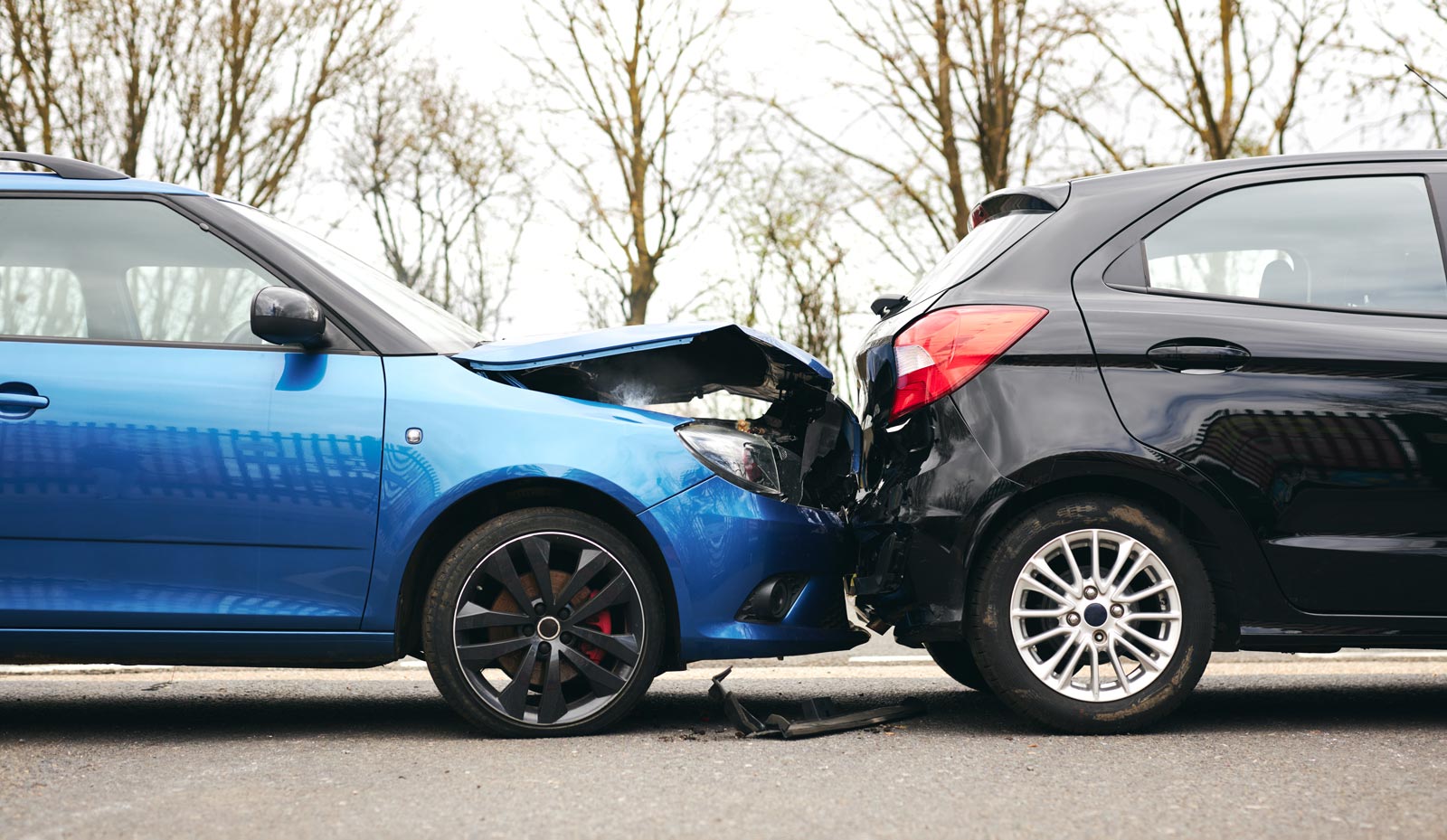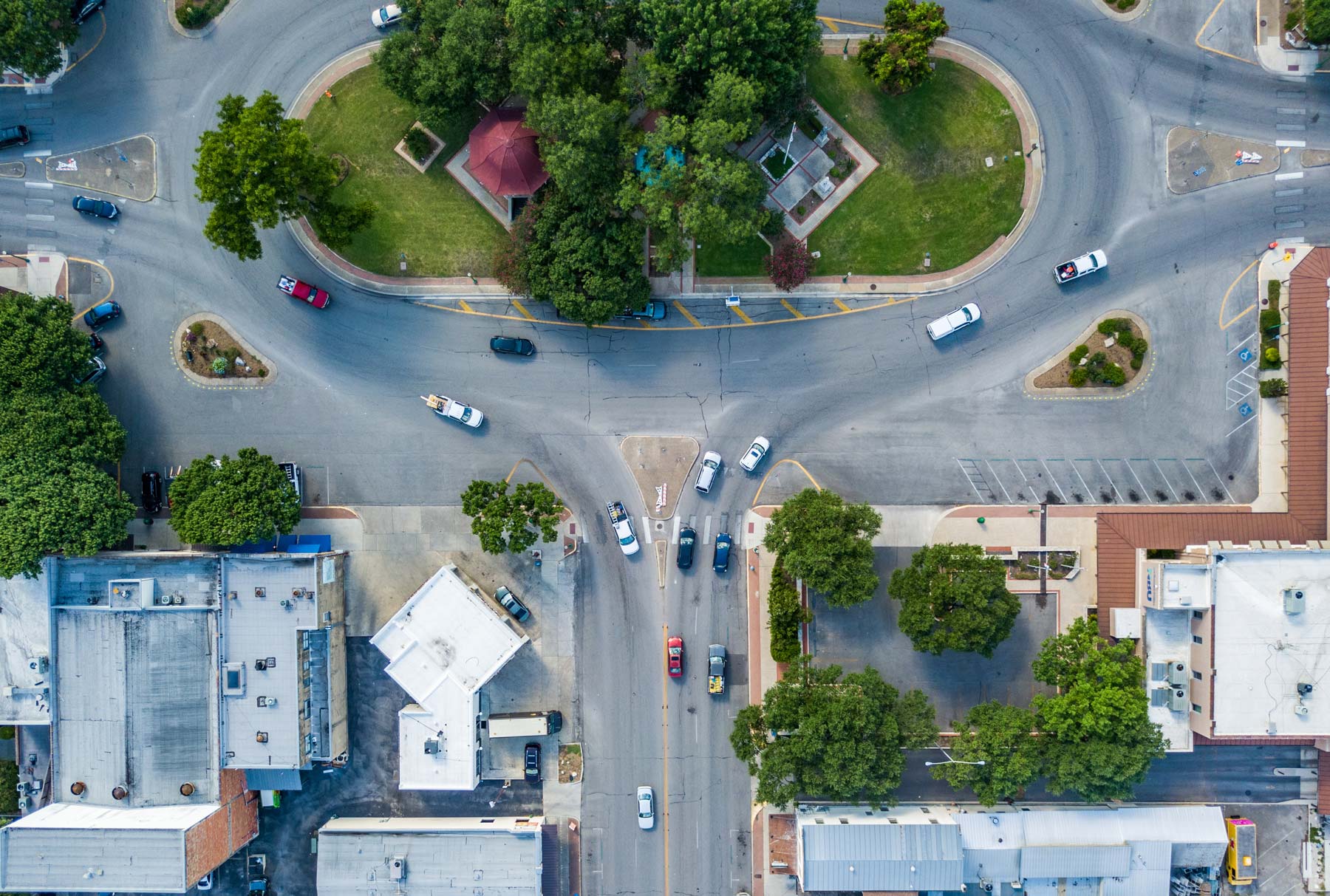If you’ve been driving for any length of time, chances are that you’ve seen another driver drift out of their lane. Sometimes they’re able to course-correct, but when the side of their vehicle makes contact with the side of another car, that’s called a sideswipe crash.
When a sideswipe crash (also called a “blind spot crash”) happens, how to tell who sideswiped who is not always clear. This blog will explain how sideswipes usually happen, how fault is determined in Texas, and what to do if this happens to you.
How Do Sideswipe Crashes Happen?
Sideswipe crashes happen when the side of one vehicle impacts the side of another vehicle. The cars may be going in the same or opposite direction. Because this type of accident often happens with little warning to either driver, these collisions can be extremely dangerous.
After the initial impact, drivers are often surprised and may react out of panic and overcompensate as they try to move away from each other. This can result in impacts with other vehicles, posts, or even pedestrians.
Common Causes of Sideswipe Crashes
The most common cause of a sideswipe crash is that one driver moves out of their lane of travel when it isn’t safe to do so, often when trying to merge. Texas state law requires that drivers stay in their lane until it’s safe to change and they’ve appropriately signaled their intent to change lanes. Common causes of sideswipe crashes are:
- Not checking blind spots
- Failing to signal a lane change
- Drifting out of the lane while distracted by electronics or other items in the vehicle
- Hydroplaning on wet or icy roads
- Reckless or intoxicated driving
- Not paying attention to the location of other vehicles on the road
Be aware that over- or under-steering on a steep curve can also result in a sideswipe accident.
Potential Results of Sideswipe Crashes
Since many sideswipe accidents catch drivers by surprise, the results of these crashes vary greatly. Because drivers typically overcompensate in response to the impact, there are many possible outcomes. Front- or rear-end collisions are possible, as are crashes with nearby objects like posts and guardrails.
Speed is also a factor in determining how severe a crash can be. While a sideswipe accident on a city street may not result in any serious injuries, the high speeds that happen on a highway mean that sideswipe accidents can be deadly.
Injuries can range from whiplash to paralysis, or could even be fatal. In a worst-case scenario, a car might flip over, or a pedestrian might be directly hit.
Determining who’s at fault in sideswipe crashes can be complicated, and it’s a good idea to consult with an expert car crash attorney who is familiar with the sideswipe crash investigation process. They can provide you with candid advice about your best course of action.
In terms of legal results, someone has to be at fault for the sideswipe. While it’s easy to say it’s the driver who unsafely left their lane of travel, how to tell who sideswiped who is not always easy.
Determining who’s at fault in sideswipe crashes can be complicated, and it’s a good idea to consult with an expert car crash attorney who is familiar with the sideswipe crash investigation process. They can provide you with candid advice about your best course of action.
When the Lane Changing Driver is at Fault
If the driver who changed lanes was at fault, it is likely that they:
- Failed to use a turn signal
- Didn’t check mirrors and/or blind spots
- Forgot to turn on headlights
- Cut off another driver
- Were distracted or intoxicated
- Didn’t observe proper speeds and spacing (yielding to other traffic) while merging
When the Driver Not Changing Lanes is at Fault
Sometimes the driver who isn’t changing lanes is at fault, such as in instances where they:
- Speed up or slow down enough to make safe lane changes difficult for others
- Are distracted or intoxicated
- Intentionally block a driver trying to change lanes or merge
If Both Drivers Change Lanes
It’s likely that both drivers bear some of the fault if both change lanes and a sideswipe occurs. This often happens when drivers in outer lanes try to enter the middle lane at the same time.
Drivers are expected to ensure that the middle lane is clear before merging. What drivers might forget is that this includes checking two lanes over for any turn signals or movement in the same direction they mean to go. Trying to drive across multiple lanes at once or weaving in and out of lanes are ways to increase the odds of a sideswipe crash.
How Crosley Law Identifies Who’s at Fault
When it’s not immediately clear who caused the sideswipe crash, Crosley Law uses a range of techniques to learn the truth.
The first things we look at are the type of damage and where it’s located. Knowing where the cars came to rest is also important. We also examine the accounts of the drivers themselves, plus any eyewitnesses.
In addition, we talk to traffic and medical experts, and use simulations and imaging to fully examine what happened to the vehicles and people involved. We’ll even employ a focus group if necessary.
Comparative Fault in Texas
Texas is an at-fault, comparative fault (comparative negligence) state. This means that the negligence of both parties will be weighed by a jury before determining things like compensation.
In Texas, if you carry 50% or less of the fault, you’re entitled to that percentage of the damages. However, if you bear more than 50% of the fault, you’re not entitled to any compensation.
Contact Crosley Law After a Sideswipe Crash
If you or someone you love has sustained property damage or injuries after a sideswipe crash, contact Crosley Law today. We have significant experience representing clients like you in Texas, and will do what it takes to determine fault and secure the compensation you deserve.
To schedule your free consultation with an expert car crash lawyer, call (210) 529-3000 or use the contact form on our website today.
The content provided here is for informational purposes only and should not be construed as legal advice on any subject.









